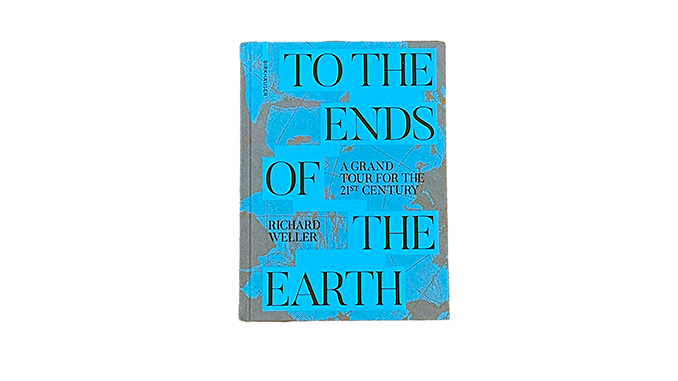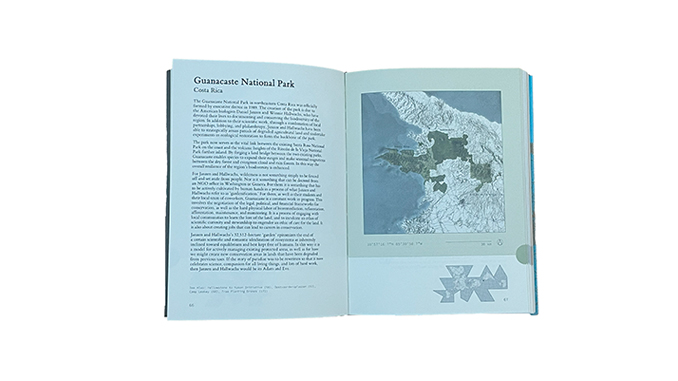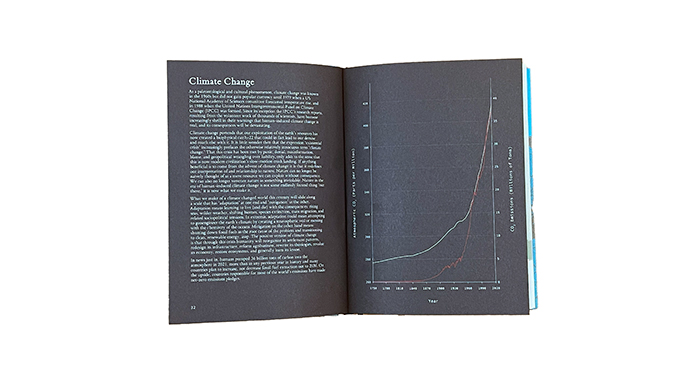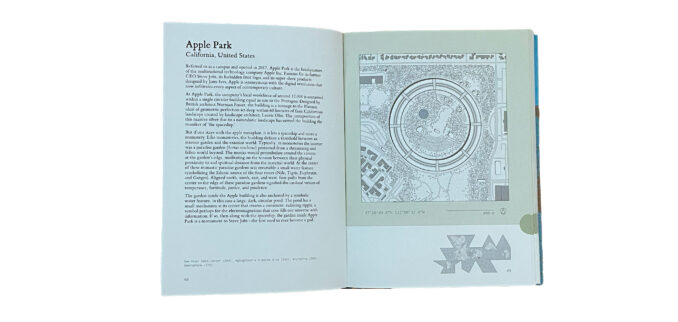
To The Ends of The Earth is a field guide for a grand tour in the age of the Anthropocene to confront reality rather than escape it. It seeks to provide a contemporary choice of destinations that questions “what the Anthropocene is, and what we, the anthropos, have now become.” The book seeks to look beyond the great monuments and to explore contemporary culture and a transformed world in gaining an understanding of the “consequences of … historical process” without overindulging in ruination or aesthetics.

The book has seven chapters: Hyperobjects, Paradises, Utopias, Machines, Monsters, Ruins, and Instruments. Each chapter explores a topic through the lens of culture, place, landscape, environment, and consequences.
When I first learned of this book, I feared it was going to be a “bucket list” of places primarily designed by only well-known designers. However, these fears were quashed when I started to delve into the book. The first chapter, Hyperobjects, sets the frame and context for the following chapters, addressing large ideas such as The Universe, The City, The Environment, Climate Change, The Anthropocene, and various other macro issues or ideas through a single-page summary and an image of the facing page.

The following five chapters, Paradise, Utopias, Machines, Monsters, and Ruins, provide a summary of places of various scales ranging from the suburban backyard to Apple Park to Burj Khalifa to Chandigarh to Guanacaste National Park with the inclusion of objects or machines such as GIS Crop Harvester. Continue the format of the first chapter each place or object again has one page of text that provides background or (site or technical) information or historical context, and some pages end with critique or commentary in an Anthropocene context and an image of the facing. The inclusion of objects or machines within these five chapters was slightly offputting at the start of reading. Still, once you remember the context and this grand tour guide is challenging the reader to understand the consequences and impact of people (Anthropos) on the planet, then the writer’s intent becomes clear.


The final chapter, Instruments, includes some objects like the smartphone. However, most of the pages are dedicated to places of varying scales, such as the Halley VI Research Station in Antarctica, the Terrestrial Megatron in France, and the Space Garden.

To The Ends of The Earth is not merely focused on one country or region; it explores various objects, places, regions, and countries; from well-known landscapes and places to those further afield. Many of the places in the book are not accessible either due to their location, such as the Space Station garden or Antarctica, while others, such as Chernobyl Reactor #4, are not accessible due to the impacts of people.
Is this book a grand tour guide for you to determine and plan your next “grand tour”? In some ways, yes, but the book is a curated journey to explore the world and the impact of people through its places, objects, and ideas in a well-published, hardcover book. If you are a student or design professional, this book allows you to take an intellectual grand 21st-century tour without leaving your city.
Review (text and images) by Damian Holmes, Editor of World Landscape Architecture (WLA).
To the Ends of the Earth: A Grand Tour for the 21st Century by Richard Weller
Publisher : Birkhäuser; 1st edition (February 23, 2024)
Language : English
Hardcover : 312 pages
ISBN-10 : 3035627932
ISBN-13 : 978-3035627930
The publisher provided a review copy of the book for this review.
